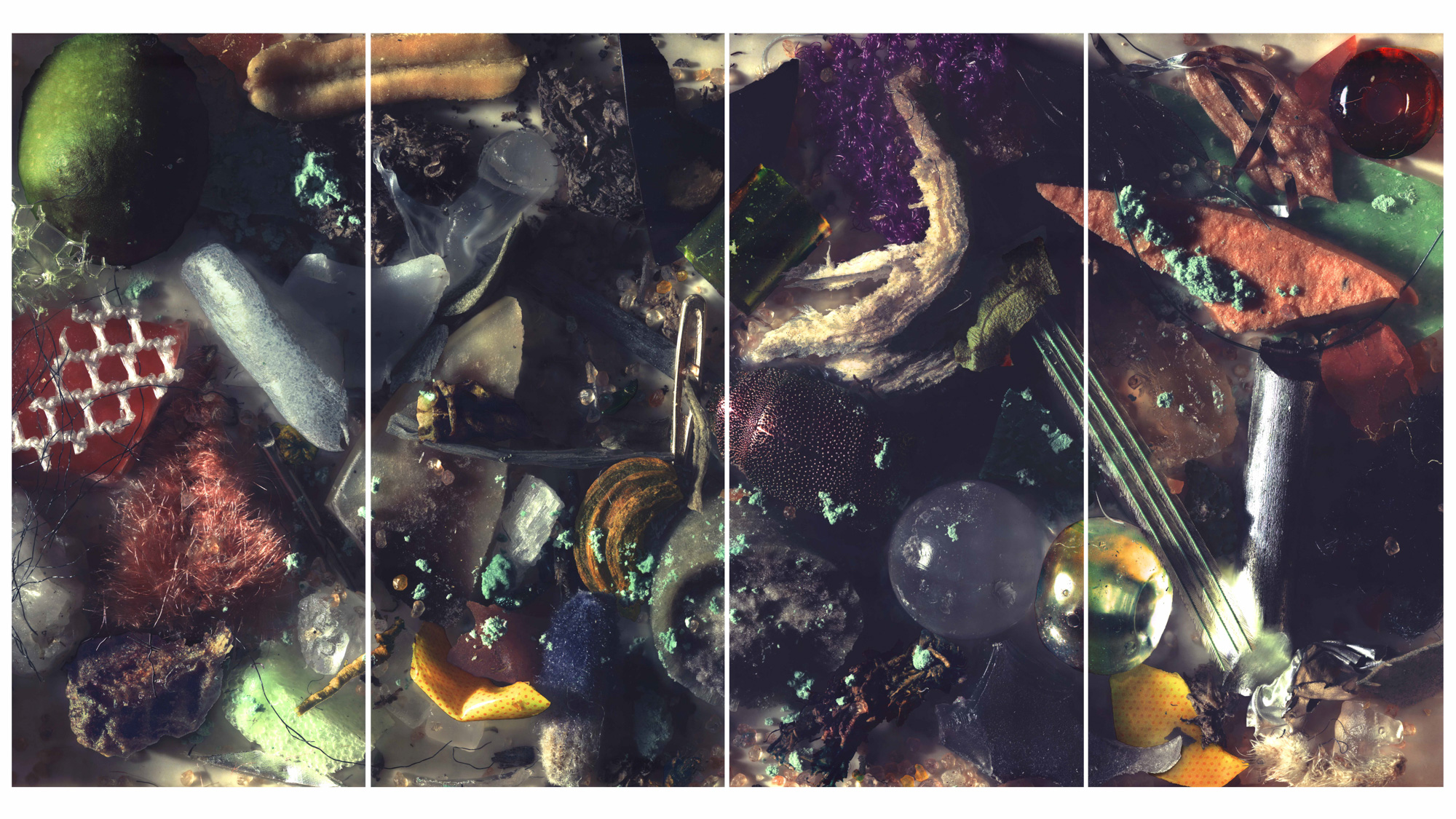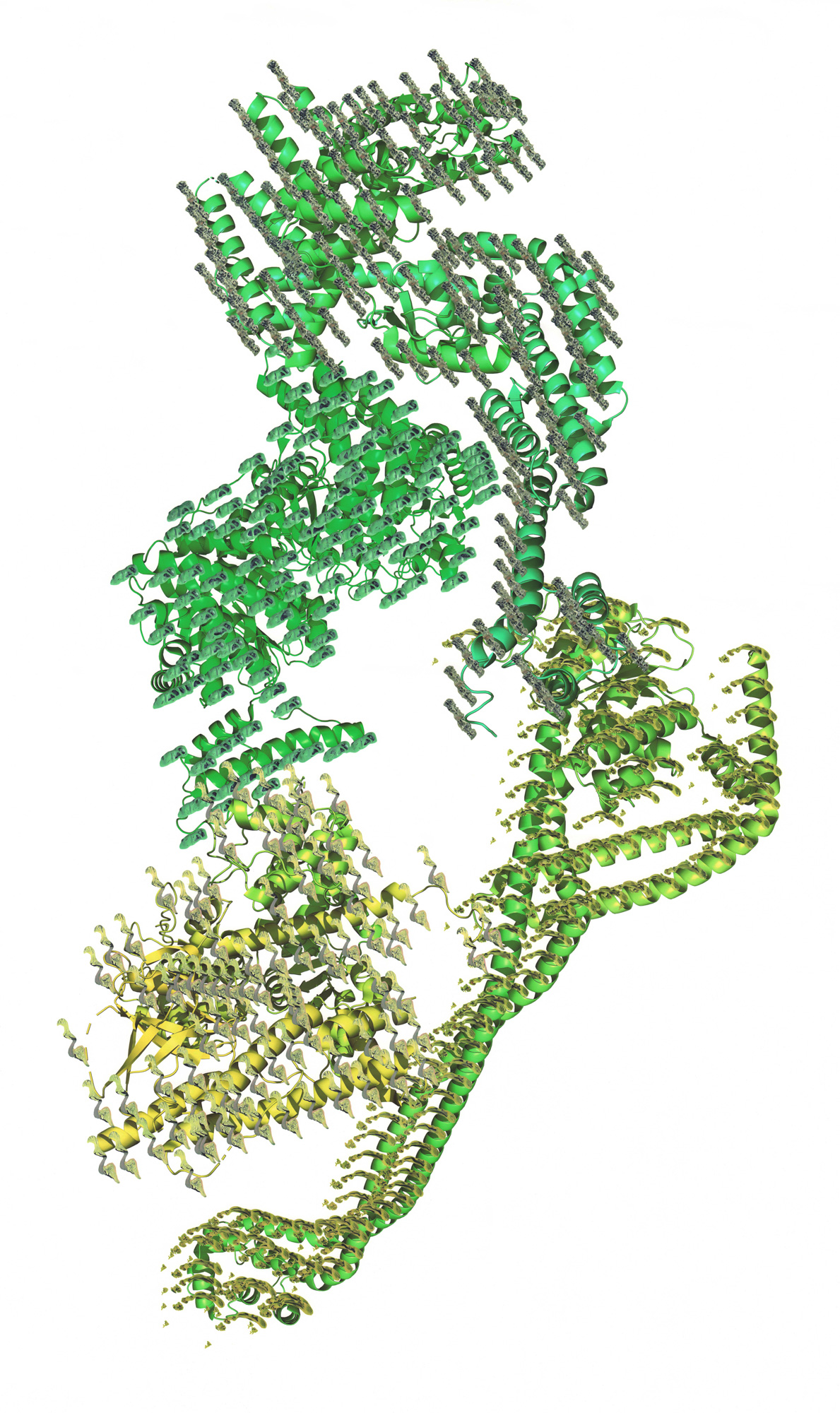Shows
Ran Zhang’s “Enantiomers and traces”


For the amateur, peering through a microscope is often accompanied by an excitement for the unfamiliar—looking through the lens to find a shape enlarged, the imperceptible rendered visible and thus fathomable to the human mind. Ironically, in the current global pandemic, both viral fear and salvation lie within the microscopic realm. Rather than excitement, unfamiliar biological microcosms are now shadowed by anxiety and ambivalence, feelings hardly alleviated by the ubiquitous warnings of an invisibly transmitted virus.
With a focus on magnified organic matter, the solo exhibition “Enantiomers and traces” by Rotterdam-based artist Ran Zhang, at Galeria Plan B’s central Berlin outpost, involuntarily banked on the presently heightened awareness of atomic-level processes. Titled after the property of molecules forming mirror images of each other—enantiomers—the small gallery show was a deep dive into Ran’s artistic endeavor of object magnification and the creation of seemingly authentic digital image duplicates.

Upon entering the gallery, visitors found themselves in front of Natritine Gaze (part 1-4) (2014–15), a four-piece print presenting an accumulation of enlarged organic and synthetic substances. On the framed silkscreens, mundane items such as pinheads, dust balls, or rubber bands are enhanced 100-fold under a microscopic camera. Ran’s image augmentation turns the method of magnifying on its head. Instead of elucidating each object’s surface, her close-up photographs unexpectedly bare completely new material topographies, where items’ textures dissolve into a bizarre, primeval landscape made up of glass, powder, and fibrous mountain ranges.

In the main exhibition space, six large depictions of atomic structures in color titled Resolution of Traits (2019) further illustrate the artist’s interest in scrutinizing the physical world. Each picture portrays a molecular rendering of the three motor proteins myosin, kinesin, and dynein. As components of intercellular transport in humans and animals, the proteins serve central biological mechanisms, for instance, contributing to muscle contractions or cell division. On a visual scale, however, the molecules’ architecture has yet to be detected by current technology, and is open to aesthetic re-composition. In the artist’s molecular vision presented on the walls, different copy-and-pasted patterns are added to each modelling of the protein structures; to nonexperts they are all but impossible to distinguish from the “original.”


Fueled by a curiosity to dissect and capture organic processes, Ran exposes the disparity between unseeable biological certainties and the process of image-making. “Any diagram carries its own dynamic, its own imaginative iconography of desires and anxieties,” said the artist in an interview about the show. “I am interested in the fact that the creation of an image can be a by-product of something else.” In the case of Resolution of Traits, she alludes to the common understanding of molecules through textbook illustrations, where theoretical knowledge of bio-structures is superimposed on mechanisms and matter otherwise invisible to the human eye.
The artist’s reflection on image manipulation culminated in a small room to the side, displaying four works from her Chiral series (2017–18). While appearing as glossy still lifes, Ran’s supersized pictures of plates of soup, beans, and gelatinous pudding reveal themselves to be oversaturated photographs of miniature food settings upon closer inspection. Chiral uses photographic methods found in food advertising, where meal facsimiles are often made picture-perfect by adding inedible chemical ingredients. Spotted with printing errors and dust captured by the camera, the inkjet prints are a play on the concept of chirality: the property of mirroring objects or structures that cannot be superimposed onto each other. Ran’s doppelgänger photographs probe the limitation of physical representation in pictures and highlight her exploration of a reality that lies somewhere between the factual, microscopic truth and the image-fictions that shape everyday life.
Clara Tang is ArtAsiaPacific’s Berlin desk editor.
Ran Zhang’s “Enantiomers and traces” is on view at Galeria Plan B, Berlin, until November 1, 2020.







